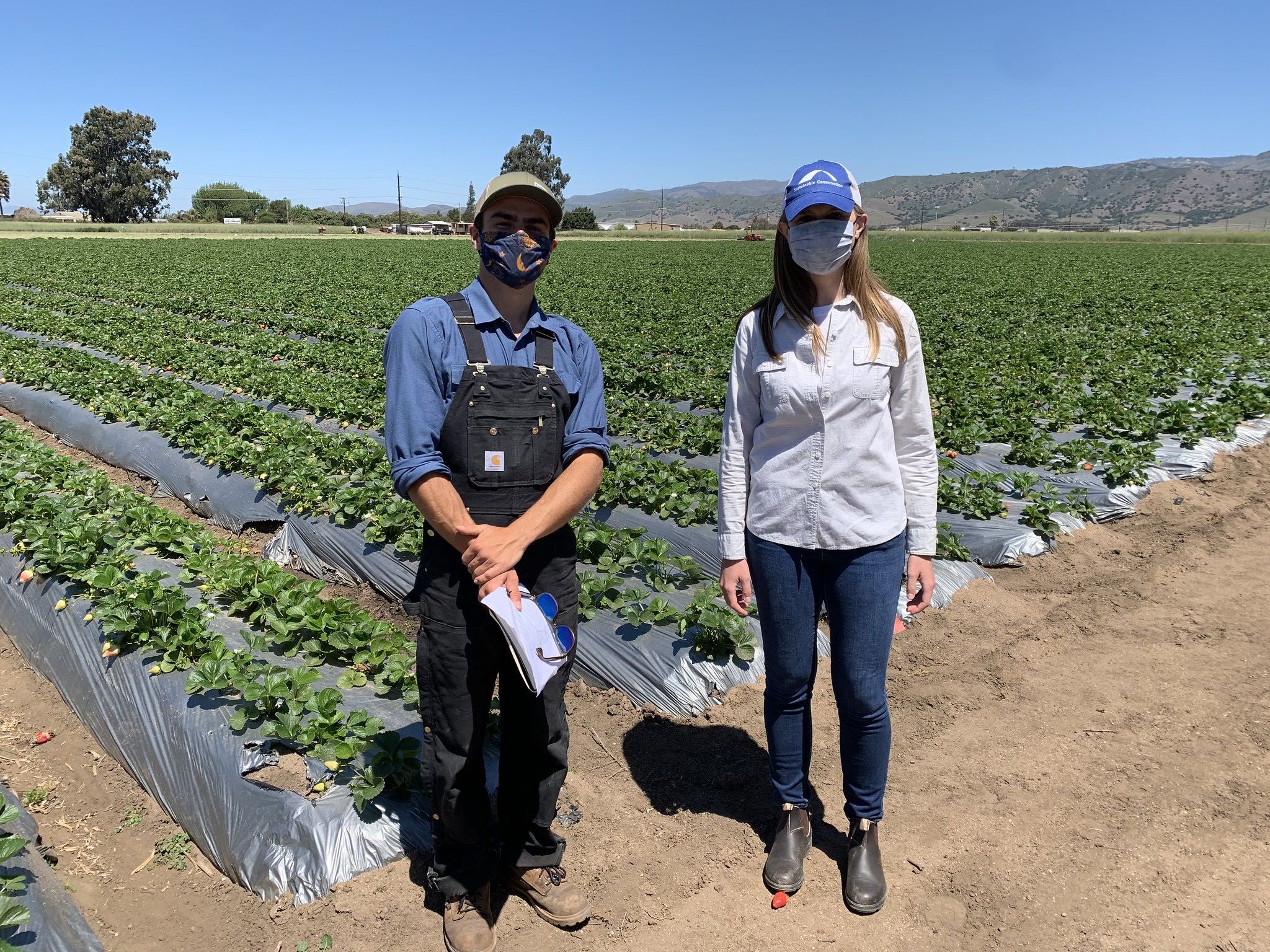
Sustainable Conservation’s Elliot Grant and Kelli McCune work diligently to sleuth out soil health and conservation incentive solutions.
We hope you enjoy this excerpt from the latest issue of our Thrive California newsletter.
We can support healthy soils – and the water quality and climate solutions they provide – by bringing a time-worn method back into vogue: cover crops. We’re happy to report that, thanks in part to Sustainable Conservation’s advocacy, the Central Coast Water Board’s new agricultural order includes an incentive for growers to use cover crops to mitigate nitrogen leaching from irrigated farmland.
Sustaining Our Croplands
Nitrogen is an essential nutrient for plants and this tricky chemical is applied to crops via synthetic and organic fertilizers. If we apply too much nitrogen, however, it can flush into our aquifers, polluting them and contaminating a critical source of drinking water.
Soil Farms Our Food
While we farm the soil, soil farms our food. Cover cropping, or planting a soil- and water-friendly crop in between planting seasons, can reduce erosion, aid water retention, and store nutrients for later plant uptake. Cover crops scavenge for nitrogen left over in the soil from past fertilizer applications – a water-quality-boosting activity that prevents nitrogen from leaching into our aquifers. Farmers then mow the cover to make way for food crops, and the biomass left behind slowly decomposes. Soil microbes eat the biomass and transform the organic nitrogen into mineral nitrogen that feeds the plants and helps the next lettuce, broccoli, or berry crop flourish.
Watch our expert panel explore how farming our soil benefits our food and our health.
Bonus Benefit
As those soil microbes die, they’re eaten by other microbes, and the cycle continues. When we add compost to the mix at the right time and in the right amounts, climate and water quality benefits can increase. While compost is the equivalent of a balanced meal for soil, cover crops provide an “energy drink” boost.
No Silver Bullet
Cover crops aren’t a silver-bullet solution. Recent regulations that include possible incentives for cover cropping can help growers move away from “yield first” perspectives to a longer term, system health outlook. Growers are interested, and need support and capital to prove out the potential.
 What’s Next?
What’s Next?
We’re digging deep into soil health this year, learning from experts and locating where we can best add value in this complex and promising field.
We’re so grateful for your partnership, and your support is what enables us to explore, evaluate and activate collaborative solutions to California’s most pressing environmental problems. Become a California Conservationists today to enjoy exclusive benefits, event invitations, staff liaisons and more.
